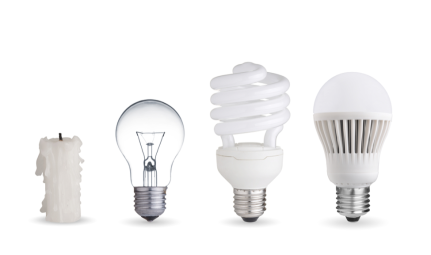
There’s been a shift in culture towards beer recently. Twenty years ago, if you saw the title “Beer and Behavior” you would absolutely expect a scathing speech of the abuses of the drink. This is not going to be that. I assume everyone reading this to be responsible. I’m interested in modern context. The beer industry has grown, become more varied, and those varieties have become more available. Craft brewing has taken off to previously unforeseen heights and different styles and personal recipes of beer are becoming available to the public like never before. It’s amazing. People are demanding more beer, and craft brewers are making it.
Now when there’s socially significant behavior out there, it can be studied. When people engage with their environment, their society, over something they want and will pay for it’s worth knowing how that works. I wanted to see how we could apply some of the concepts we use in Applied Behavior Analysis (ABA) to get an idea of it. Behaviors as the consumers, and behaviors as the provider. That’s where Midnight Oil Brewing Company came in to provide the setting for studying and some insights on what the process is like on both sides of the bar. That night, in particular, they had nine of their craft beers on tap and full-house of people engaging in operant behaviors to gain access to them.
Now let’s talk behavior.
Beer can be a Reinforcer. Think of a reinforcer as a type of stimulus that resembles a reward. What makes a reinforcer special is that it maintains or increases the likelihood of the behavior that precedes it. Think of it like this-
A person walks up to the bar and asks for a beer, maybe a Serenity session ale, the bartender pours that beer and hands it to them.
Assuming that the beer is what they like, and they find it reinforcing, the consumer would be likely to return to that same bar and order again. That’s reinforcement. To break it down further- The consumer’s behavior (requesting) operates on the environment for access to that beer. Access to the beer is socially mediated by talking to the bartender and the eventual exchange of money, but if they get access to the beer and like it, the reinforcement acts on that requesting behavior’s presentation in the future. The requesting behavior happens again or might even happen more often. There was a big if in there though. The beer had to be enjoyable, or reinforcing, to the individual for it to work. People have different tastes, and as you may be aware, not all people like all types of beer.

Beer Flights can be a Preference Assessment for Reinforcers. A preference assessment is a tool used to figure out which stimuli are reinforcing at a given time. This is done by a presentation of a varied set of stimuli to an individual, which they have access to and engage with, and eventually, you get a hierarchy from that. By looking at what gets chosen more, you can tell which stimulus a person likes best at that given moment. Preferred stimuli make for great reinforcers for behavior. Now at a taproom or bar, we can use these preference assessments to determine our own hierarchies of the types of beer we enjoy. This can help us weed out the types we do not like, which help us not select them in the future, from the types we do like.
A person has a flight of 9 beers in front of them. They try all nine, but only like and continue to drink the Stouts, Porters, and Saisons.
On the other side of the bar, a bartender can observe a person with a flight of beers, and use the information from watching what beers were selected and consumed at higher amounts, to make better suggestions for that person’s next choice to order. A little rapport building goes a long way. (I know that I tend to order more of the suggestions of a bartender that understands my preferences. Personal opinion-data point of one.). On the business side of things, having consumers choose a selection of beers they enjoy repeatedly can have long-term reinforcing tendencies on their return and future consumption. Imagine an example of a person mistakenly trying a few beers in a row of a style they dislike. This could punish beer seeking and buying behavior- the opposite of reinforcement. Knowing where to guide a consumer is useful information. The trend of behavior can go in both directions, and a preference assessment could be key in making the experience enjoyable for everyone.
Taprooms can employ J.R Kantor’s Setting Events to create an environment to facilitate engagement from consumers not only as paying customers but prosocially with one another. Some people call this ambiance. Some people call this the “feel” of a place. In early behavior analytic research, behaviorists like J.R Kantor were interested in antecedent stimuli, “things” in the environment that could either prime behavior, or discriminate (select) specific behaviors to occur. These are stimuli, variables in the environment, that may influence certain behaviors to occur over others.
Larger spaces with a higher number of tables could lead to a higher retention of served consumers, more bartenders responding to requests could lead to higher rates of (responsible) beer requests, larger tables could lead to groups forming, televisions playing a specific program could retain specific like-interested individuals, and play-oriented items like boardgames could provide alternative sources of reinforcement and retain consumers on the premises for longer.
The potential is endless, and many of these examples would have to be fine-tuned and tested for practicality, but these are all things that could be set in place before someone even steps foot in the door. Antecedents are powerful things. But Setting Events aren’t the only concepts out there that explore them- there are also Motivating Operations. We’ve talked about Reinforcers, and even Punishers. These are stimuli that have an effect on future behavior, but there was a great researcher named Jack Michael that noticed that there are factors that can momentarily affect the value of those stimuli, and the behaviors seeking them.
Thirst and Hunger can be Unconditioned Motivating Operations. When you see the word Motivating Operation, take the common well-known word of “Motivation” to guide your understanding of it. Unconditioned just means that it is something innate, or not learned. Unconditioned Motivating Operations (UMOs) are often based on natural biological drives, and in taprooms and bars, the most common ones we see are based on deprivation and satiation. Thirst is a great example of a UMO.
If a person is thirsty, a beer is more likely to be a strong reinforcer, and their behavior to seek it out is more likely. The same with hunger, as a UMO for food-seeking behavior, and food as a reinforcer.
The same, however, can go for satiation. If someone is full, that satiation acts as a UMO and abolishes the seeking behaviors and reinforcement value of food or drink.
Beer can involve Conditioned Motivating Operations too. Conditioned Motivating Operations (CMOs) are just like Unconditioned Motivating Operations; they momentarily alter the value of a reinforcer- like beer. The only difference is that these are conditioned, or learned. The research on these has been back and forth. Some say their effects are noteworthy, and others say these theories don’t hold much water. I think they can make a great way of conceptualizing how preferences, or reinforcement values, can be affected by a person’s learned history. To that end, I’m going to try and make a taproom, or beer example, for each type of CMO.
Surrogate Conditioned Motivating Operation (CMO-S)- A surrogate CMO is something that alters the value of a reinforcer because it has been paired with an Unconditioned Motivating Operation, and takes on its effects. Here’s a craft beer example:
Unconditioned Motivating Operation- Deprivation. The value of beer is going to be higher.
Surrogate Conditioned Motivating Operation- “Last Call”. The value of beer is going to be higher due to a paired deprivation scenario (UMO) in the past.
In these conditions, we can speculate that it would have a behavior-altering effect in the same way deprivation does, and a value-altering effect on the beer as a reinforcer for requesting right before time runs out. A deprivation (UMO) has been paired with the “Last Call” stimulus enough that it takes on some of that effect.
Reflexive Conditioned Motivating Operation (CMO-R)- A reflexive CMO alters the value of its own removal. Behaviorally, this is called “discriminated avoidance”. Learned avoidance to a specific thing. Basically- a person is presented with something, they’ve experienced it in the past as something aversive or bad, and they want to get away from it. Just the presentation is enough to cue behaviors to avoid it. Here is a personal Beer CMO-R I’ve experienced.
Conditioned Stimulus- A saison in the middle of a beer flight, which ruins the flavors of otherwise amazing beers tasted afterward.
Reflexive Conditioned Motivation Operation- Seeing the word Saison on a beer flight list. All behaviors that can get the bartender to NOT include it are altered (more likely).
Saisons (NS) are okay types of beers on their own, but again, personal data point of one, ruin the palate for the tastes that follow it when they are in a beer flight (CMO-R). The presentation of a saison in a beer flight is enough for someone (me) to engage in behavior for its removal.
Transitive Conditioned Motivating Operation (CMO-T)- A transitive CMO is something a little broader, and looser, conceptually. It involves an alteration of the value of another stimulus. Generally, through improvement. Like the other CMOs, this is also based on a persons learned history. Some traditional examples like to go for the blocking of a behavior chain, leading to another stimulus to solve it becoming more valuable. I much prefer the “My Friend Has That Beer And Now I Want It Too” transitive conditioned motivating operation conceptualization. For this to work, it requires a learned history of a friend that often selects delicious beer. This delicious beer paired history also has a discriminative quality of “being better” than the persons first choice before. Their friend just picks the better beer every time. It’s not fair. Let’s play it out like this.
Person’s Requesting Behavior: “I’d like an Insomnia Stout”.
Friend’s Order Afterwards: “I’d like you to layer this Doc Brown Ale with the Dark Matter Stout on top.”
Transitive Conditioned Motivating Operation- This value altering condition (Friend’s Order) may not have physically blocked the first response (Person’s First Request), but it is a stimulus presentation with a value altering effect strong enough create the need for a stimulus change.
Person’s Second Requesting Behavior: “NO WAIT! Cancel that first one. I also want that Doc Brown Ale with the Dark Matter Stout on top.”
What do you think? Has that happened to you before? Could it be explained by the transitive conditioned motivating operation? I think it just might.
So we’ve gone through some Behavior Analysis, and we’ve gone through some Beer. Do you have any other examples of common human behavior that could be explained by these terms, or others, behavior analytically?
Questions? Comments? Arguments? Leave them below!
References:
COOPER, JOHN O.. HERON, TIMOTHY E.. HEWARD, WILLIAM L. (2018). APPLIED BEHAVIOR ANALYSIS. S.l.: PEARSON.
Wahler, R. G., & Fox, J. J. (1981). Setting events in applied behavior analysis: Toward a conceptual and methodological expansion. Journal of Applied Behavior Analysis,14(3), 327-338. doi:10.1901/jaba.1981.14-327
Big Thanks:
to Midnight Oil Brewing Company







